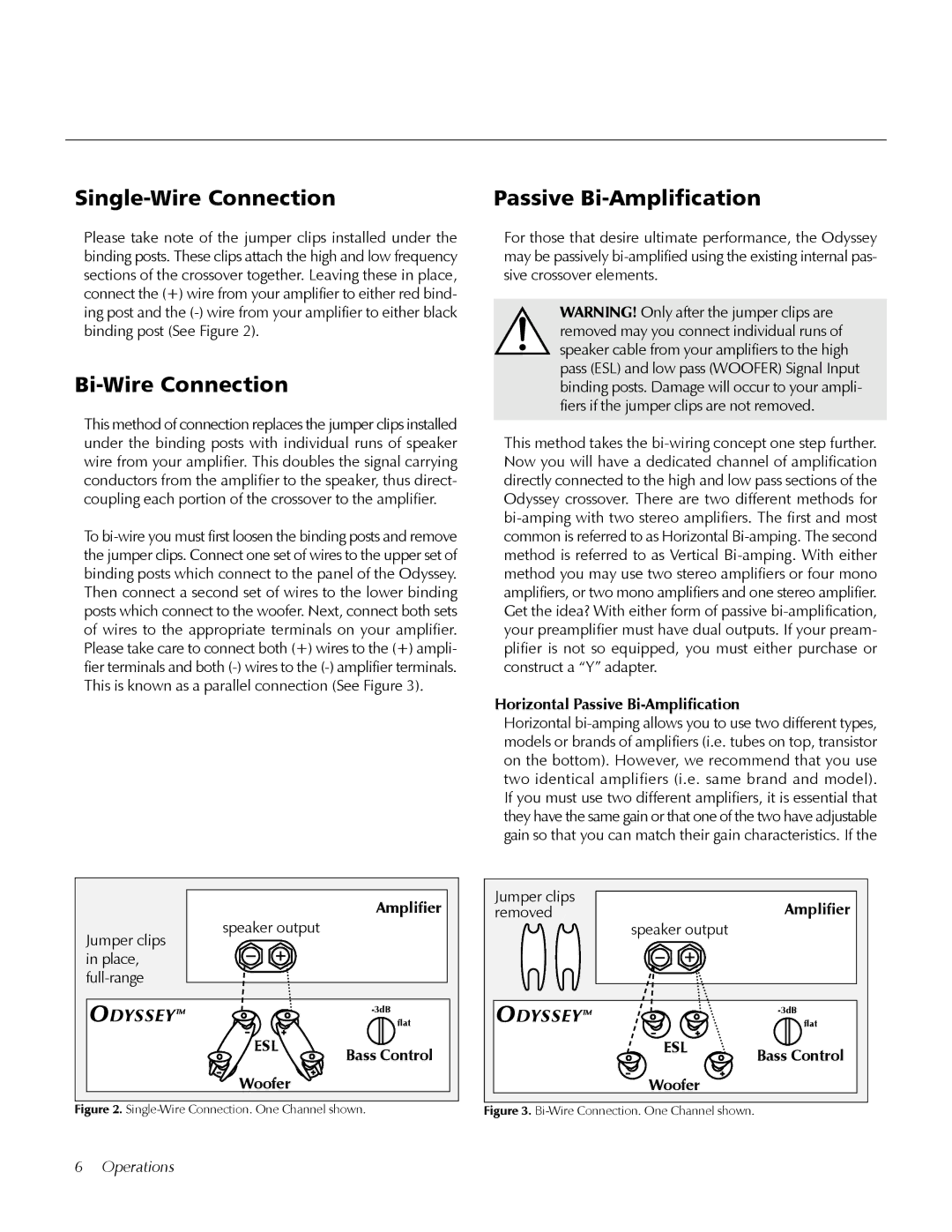Odyssey specifications
The MartinLogan Odyssey is a distinguished loudspeaker that showcases the brand's commitment to innovation, craftsmanship, and exceptional audio performance. This electrostatic speaker is designed for audiophiles who desire an immersive listening experience, blending advanced technology with luxurious aesthetics.At the heart of the Odyssey is MartinLogan's renowned electrostatic technology, which utilizes a thin, electrically charged diaphragm suspended between two perforated metal stators. This design allows for extremely low distortion and a wide frequency response. The result is clear, detailed sound reproduction that captures the nuances of both music and film audio, making it a perfect choice for critical listening environments.
One of the standout features of the Odyssey is its unique design that incorporates the company's latest advancements in transducer technology. The speaker boasts a large, full-range electrostatic panel, which provides an expansive soundstage and extraordinary imaging. This panel is complemented by a high-performance, low-frequency driver that seamlessly integrates with the electrostatic element, ensuring a well-rounded and balanced sound across the auditory spectrum.
The cabinet design of the Odyssey is also noteworthy. Crafted from high-quality materials, the enclosure is engineered to minimize resonance while providing a visually appealing appearance. The sleek, contemporary design fits elegantly into a variety of interior settings, making the speakers a stylish addition to any audio setup.
Another significant feature of the MartinLogan Odyssey is its precise, adjustable crossover network. This network manages the transition between the electrostatic panel and the woofer, ensuring smooth integration and coherence across all frequencies. Such precision in engineering allows discerning listeners to enjoy their favorite recordings with impeccable clarity and detail.
Additionally, the Odyssey is designed for versatility in placement. The speaker is equipped with various adjustment options for height and tilt, allowing users to optimize sound dispersion and field. This adaptability makes it suitable for both dedicated listening rooms and home theaters.
In summary, the MartinLogan Odyssey exemplifies what can be achieved with state-of-the-art electrostatic technology combined with thoughtful design. With its focus on audio fidelity, impressive build quality, and aesthetic elegance, the Odyssey stands as a titan among high-end loudspeakers, appealing to both audiophiles and casual listeners alike.

